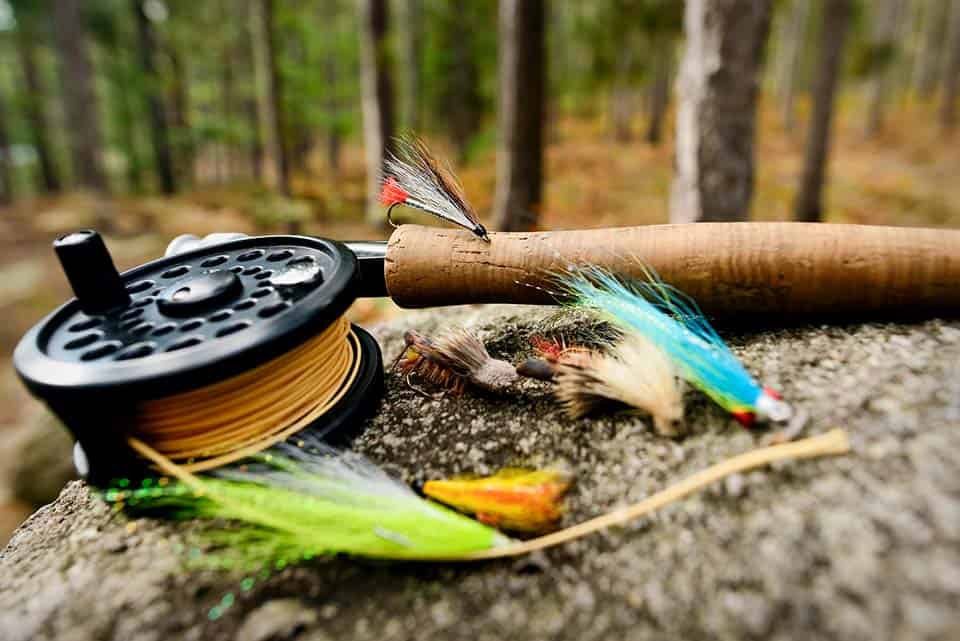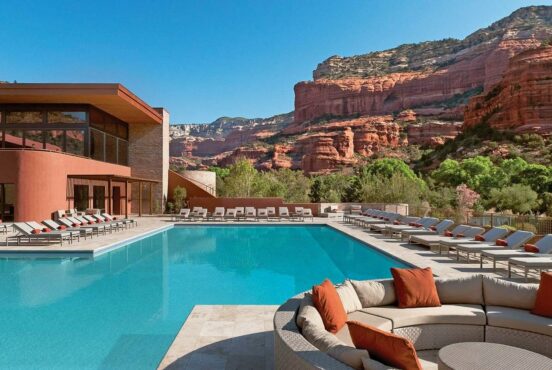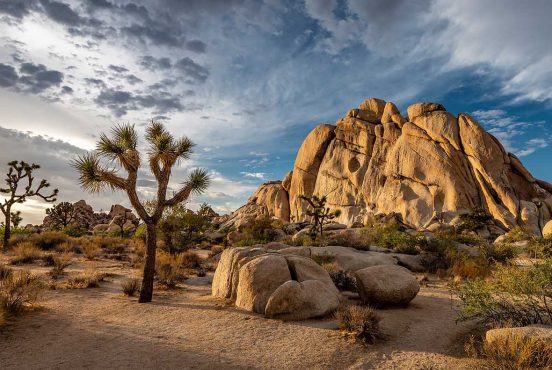Fly fishing is far more intensive than the image you probably have in your head, but that’s the point — the challenge makes the reward of reeling in a catch even sweeter.
We’re not talking about plopping a line in the water with a bobber and waiting for something to happen. To fly fish, you need to know about the fish you are targeting, the river, current bug hatches that your fish are feeding on, and the habits of those fish. Picking the perfect fly is vital — trout are very suspicious creatures and won’t go for just any ole’ bait.
In short, it takes a little homework, plenty of preparation, and of course there’s the finesse of actually fly fishing. That may sound like a lot to take on, but once you get it down — and don’t worry, you will with time and practice — you’ll quickly see why fly fishing is such a popular pastime for outdoor enthusiasts.
A full how-to discussion is beyond the scope of this article, but if you’re looking for tips and tutorials I’d recommend browsing Orvis’ Fly Fishing Learning Center. It’s a great resource for everyone from first-timers to seasoned fishermen, providing plenty of how-to videos for beginners and advanced tactics for experienced fly fishers.
Fly Fishing In Utah
In this article, we’ll provide everything you need to know about fly fishing in Utah, along with tips on the best local fishing holes to cast your line.
To start, you’ll first need a Utah Fishing License. Start by reading through all of the state regulations, then you can purchase a license from the Utah Division of Wildlife Resources.
Note that some locations require a separate permit for fishing, so be sure to do your homework to get everything squared away.
The Best Flies for Utah

Fly fishing requires you to dive into entomology a little bit since you’ll be mimicking insects and insect larvae with your flies.
The type of fly you use will mostly depend on the season. In the winter, it’s best to go with streamers and midge fly patterns because leaches, minnows, and midges will be the usual food in these cold months.
When the weather starts to warm up, use more nymphs or wet flies that sink to best mimic newly hatched larvae. Streamers and other dry flies will work throughout the spring as more bugs are hatching and becoming adults.
During the summer, all the above will work since bugs and fish are out in full force. Orange and yellow hopper patterned flies do very well in southern Utah during the warm months.
In the fall, the fish are typically less hungry and become far pickier with what they’ll eat. Trout will typically choose to go for something nymph-like over going to the surface for a big fly as the weather cools.
Bug hatches in Utah won’t dwindle until November, so your best bet will be to identify what insects are in and around the water.
Identifying the insects that are available to the fish you’re going after is important to do regardless of the season. Insects vary with each location, so expect to be switching it up a bit if you bounce between different fishing holes.
The Quick Seine is a bug screen that easily attaches to any landing net handle. With your net as a bug screen, you can easily see what the current hatches are that the fish are feeding on. “Matching the hatch” will be your best bet for all-day catches.
The Best Seasons For Fly Fishing In Utah
Fly fishing can be done year-round, but some seasons are definitely better than others.
December through February is the coldest time of year, so there won’t be as many fish out. Fly fishing in these colder months takes a bit more know-how and experience, so it’s not suggested for beginners.
Even in Utah’s desert it gets quite cold in the winter, so come prepared for the elements.
March marks the beginning of spring, which is your best bet to have some great catches while avoiding the crowds. It may be cold and windy, but it’s worth it in the end. Hatches begin happening again in the spring, providing fish with a lot more to feed on and you a higher chance of a catch.
Don’t let the higher chance of rain in the springtime deter you from fly fishing. While it might not be the most comfortable and dry situation for you, rain actually brings out the bigger trout.
The rain darkens the water, so darker and bigger flies such as streamers and spinners are best. Trout move out from cover and into shallower, slow moving water after a heavy rainfall has brought out all their favorite food.
By June, the fish, bugs, and fishermen are in full force on the waters of Utah. Hatches reach their peak around June and begin to dwindle in November.
By fall, fish become picky (and suspicious) eaters, making this a rough time to fish. That said, experienced fishermen will find that fishing during the fall in Utah is the best way to spend your day. The crowds are gone, and you can really test your skills.
Fly Fishing Gear

Utah offers a wide variety of the kinds of fishing you can do. Between lakes, reservoirs, rivers, and streams, the possibilities are endless.
The location you fish impacts the type and amount of gear you need to fly fish. For example, when fishing on a large lake, you will need a boat to reach the deeper parts of the lake. In contrast, wading might not even be necessary when fishing rivers and streams.
Reservoirs are all unique, and it’s sometimes possible to reach the depths easily from shore or a dock. This is because reservoirs lack a natural receding shoreline. Each reservoir and lake is different however, so check into the spot beforehand.
As far as rods, reels, and flies go, this gear should be based off the season, depth of the water you’ll be fishing, and type of fish you’re targeting. The type of flies you use will depend on the types of insects currently available to the fish, as mentioned before. If you are looking for lake trout that reside in deeper lake waters, you will want to bring weights and bait.
The other necessities include a landing net, fishing vest, and waders. These few things will make your life easier, and a fishing net will protect the fish during handling.
You will also want something to sift through the water to figure out what kinds of insects have recently hatched. This can be anything from an old Tupperware bowl to the Quick Seine mentioned earlier.
Don’t forget your UV protection! This includes everything from sunscreen and sunglasses to UV-protective clothing.
Polarized sunglasses are a must for being on the water. The polarization protects your eyes better, but also cuts the glare so you can see better and even see fish below the surface of the water.
Utah’s Blue Ribbon Fisheries
Utah’s Blue Ribbon Fisheries are waters that have been evaluated by the Utah Division of Wildlife Resources biologists and Advisory Council to receive its Blue Ribbon status.
This status provides anglers with abundant knowledge of the water’s habitat, fishing quality, outdoor experience, and even economic benefits of fishing in the area.
For the sustainable fishermen, fishing at Blue Ribbon locations will continue to promote healthy fish habitats as well as healthy outdoor experiences. When an area is deemed a Blue Ribbon Fishery, it can then be protected and grown as a natural resource.
The Blue Ribbon Fisheries website is a great resource for anglers to find their ideal Utah fishing experience while helping keep Utah’s waters healthy and flush with fish!
The Best Fishing Holes In Utah
Whether you are an experienced fly fisher or just starting out, Utah’s lakes, rivers and streams plentiful fly fishing opportunities for everyone. The scenery is pretty awesome, too, providing a generous dose of gorgeous vistas to go along with a great day of fishing.
Green River

The Green River is a dream for trout fishing, home to Cutthroat, Rainbow, Brookies, and Wild Brown. It’s about three hours from Salt Lake City, and totally worth the drive.
This river actually holds a record for the most trout per mile over any river in America. I’ll take those odds any day!
Wide and slow enough to drift on, floating along this river will produce the best results. Wading or staying dry is also popular here since the water is so calm compared to areas with rushing water.
Artificial lures are required on the Green River. Feel free to stop by local fly shops before getting on the river to learn what flies and techniques work best in the area. The Weber River covers a lot of land, flowing from the Uinta Mountains and emptying into the Great Salt Lake. It’s easily accessible, running through Ogden and easily within driving range of Salt Lake City. A wide variety of trout can be found in the Weber River. The terrain is mostly flat throughout the river, and there are several tributaries such as East Canyon Creek, Cottonwood Creek, the Ogden River, and Lost Creek. Given a name like Fish Lake, it’s no surprise that this fishing hole get’s pretty busy during prime fishing months. You’ll find this spectacular fishing hole near Capitol Reef National Park on the Fish Lake Hightop Plateau. The mountain scenery here is incredible, so you’ll enjoy some great views while you’re casting your line on the lake. Giant lake trout, rainbow trout, and splake hybrid trout make the trek from Salt Lake City worth it. It’s possible to fish from shore here, but recommended to fish from a boat if you are looking for lake trout since they will be in the deeper water. The shoreline also has a lot of weeds and other obstacles that make fishing from shore difficult. If you are going for lake trout, bait such as dead minnows or night crawlers and heavy weights will prove best in this lake’s deep waters. The Provo River originates in the Uintas, and flows just south of Salt Lake City. The Provo River is very popular among fly fishermen, as it never fails to produce large trout. One of the many Blue Ribbon waters of Utah, the Provo River is where you can find record-size trout. Giant Brown and Rainbow Trout call this river home. In its best areas, the Provo can have 3,000+ trout within a single mile. Three major sections of the Provo provide ample locations to fish. Many of the best (secret) spots are within private property lines, but many guide services in the area can provide access to these spots. If you are not with a guide, be sure to avoid getting into any trouble with property lines. Access to the Provo is never a challenge, as roads and towns generally follow its path out of the Uinta Mountains and into Utah Lake in Provo. Easy access makes fishing here to be an easy addition for any road trip! In southern Utah, the bigger and warmer waters of the Colorado River and San Juan River are mostly filled with catfish. The Delores River, on the other hand, is full of picky — but huge — trout. The Delores River is the perfect spot for an experienced angler to test their skills due to its clear water and picky fish. The insect hatches are plentiful here, allowing the fish to be choosy with their meals. Dry flies work well here as early as April. The warmer water also means a longer fishing season! Due to its warmer location near Moab, the Delores River does not get that busy with anglers. The much quieter scene is worth checking out at least once. Few outdoor activities pair better than camping and fishing. If you’re looking to turn your fly fishing adventure into a multi-day trip, check out our articles on the best campgrounds near Salt Lake City, Provo, and Park City. Get epic travel ideas delivered to your inbox with Weekend Wanderer, our newsletter inspiring thousands of readers every week.
Fish Lake
Provo River

Camping + Fishing In Utah
Delores River
Explore More in Utah










